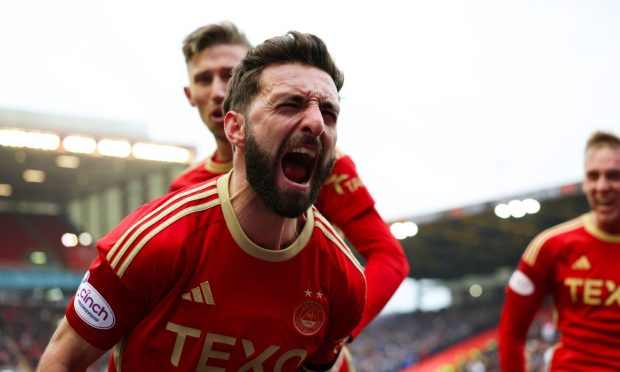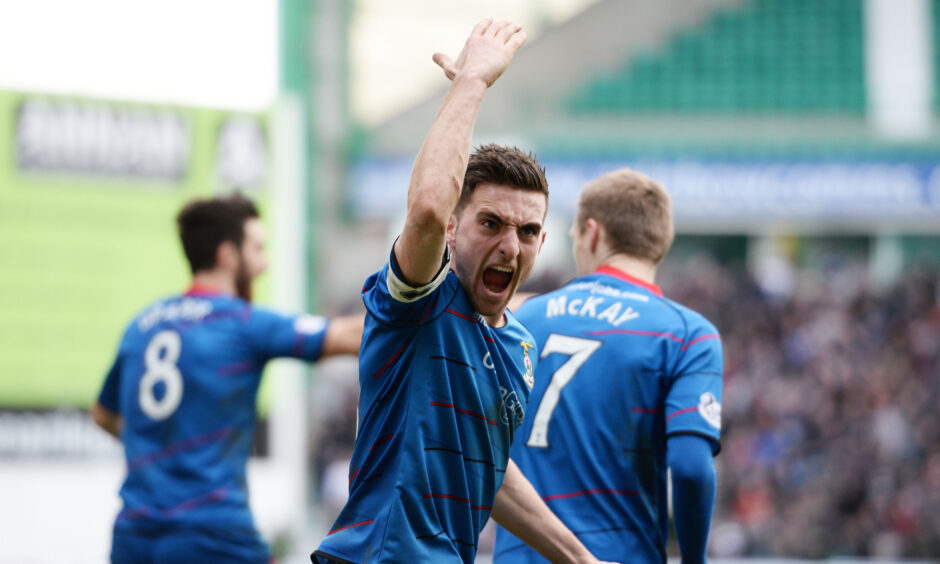Aberdeen captain Graeme Shinnie has spoken of his pride at still going strong in Scottish football at the age of 32 after fearing his career was over as a teenager.
In an interview with Sky, the Dons skipper has spoken of his how he has not let his struggle with Crohn’s disease prevent him from chasing his dream of being a professional.
Shinnie said: “At the age I am now, looking back at everything that I’ve achieved in my career, I’m massively appreciative because at one stage I thought it was all gone.
“To be sitting here now still the captain of Aberdeen, and still playing at a high level every day is a blessing for me and I take each day as it comes.”
The former Caley Thistle captain still has to manage his condition carefully but says the process is less invasive than it was earlier in his career.
He said: “Some days are okay and some days it hits me like a steam train, but it’s a case of trying to put the feet up as much as I can.
“I’ve got two children so it’s not as easy to put the feet up as much because it’s trying to do a lot of stuff with them.
“But it’s a case of trying to manage it as best I can in terms of relaxing when I need to and just switching off and letting my body recover.
“I self-inject every two weeks, which is a lot easier than necking tablets every day.
“It’s a self-inject pen, it’s got a little presser on the top and you just put it in your leg and press the button and it’s done.
“That is a massive help to keep my illness at bay.
“It’s an immunosuppressant which lowers my immune system so trying to keep on top of illnesses and flu is tough at times, but it definitely helps keep my wellness.”
Shinnie has fought for 20 years
Shinnie, who was diagnosed with the chronic illness at the age of 12, tried to fight through the pain as a teenager with Caley Thistle.
But by the age of 18 the daily struggle took its toll, leaving Shinnie to endure 11 hours of surgery.
He said: ”I had been fighting it discreetly in my own way because I didn’t want to give into as such, but I wanted to be out there playing football,” he told Sky Sports.
“I wanted to be out there living my life and I was sort of living in the background with these horrendous stomach pains and fatigue and the problems that come with Crohn’s.
“We beat Morton in the Scottish Cup and that game was the last straw. My parents had come up for the game and I went home that night and broke down.
“I couldn’t go on and the pain was too much for me. I had to have a bath almost every hour to relieve the pain.
“I went into hospital in Inverness and within a matter of days I had a big op, I think it was 11 hours in the end.
“They took part of my bowel away, part of my colon and I had three abscesses at the time, which I didn’t know about, that needed to be drained.”
Midfielder feared his career was was over as a teenager
At his lowest point Shinnie’s dreams of playing were in jeopardy.
He said: “Getting out of bed was a massive task, going to the ward window was then the next level and then having a wander around the ward.
“These were the small goals that I was setting for myself with the doctors around me and it was the fear of ‘I can’t even walk, how am I going to be able to run especially the way I run around the football pitch?’
“How am I going to get back to that level?’ That was tough to deal with.
“Immediately after my op, my health was the most important thing, the football was never in my mind at that point.
“It was touch and go probably whether my career was going to go ahead or not; whether it could get back to where I was.”
Shinnie’s gratitude to former Caley Jags boss
Slowly, the midfielder was able to work his way back to the training pitch at Inverness under Terry Butcher and he remains grateful for the support he received from his former manager.
He said: “Terry Butcher was my manager who was a massive influence on not only my football career in terms of giving me my opportunity but being around me at that time, visiting me every week.
“After coming out of hospital and trying to build my fitness back up, and my physique and everything else, he was there with me all the way telling me ‘there’s a place for you when you come back’.
“Having that alongside me was massive to keep going and the drive to get back to peak fitness.”



Conversation